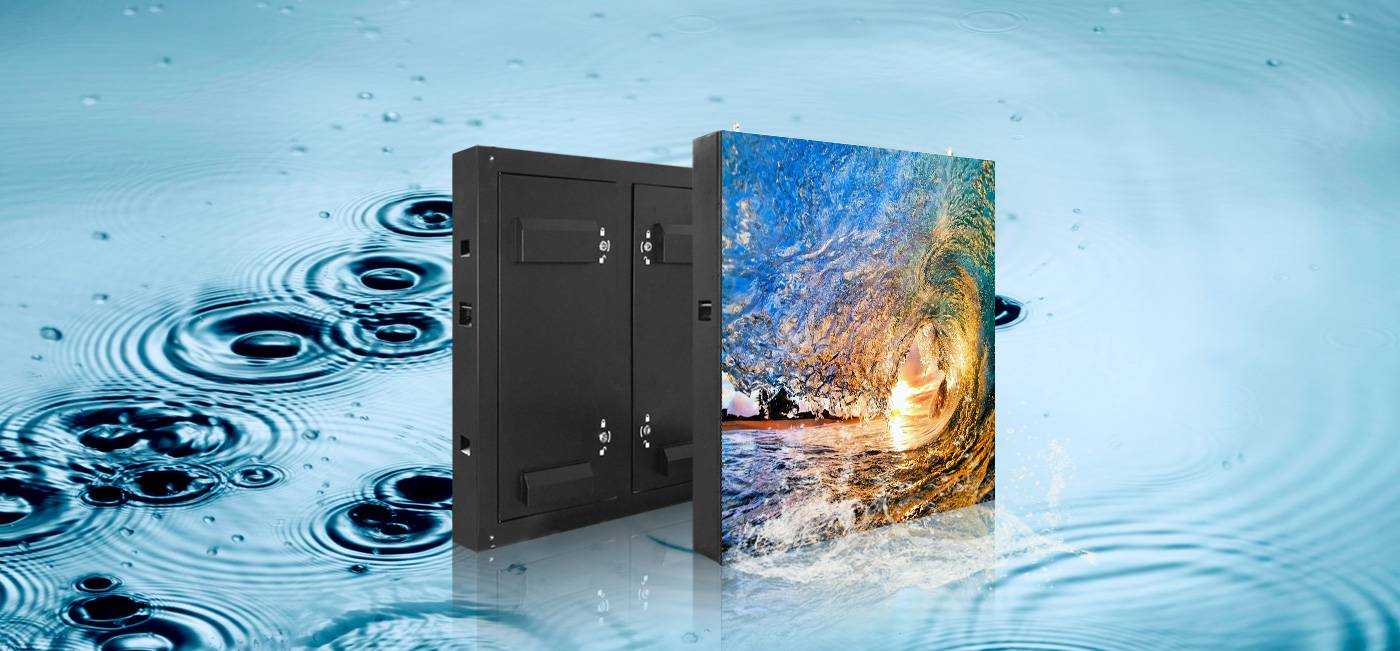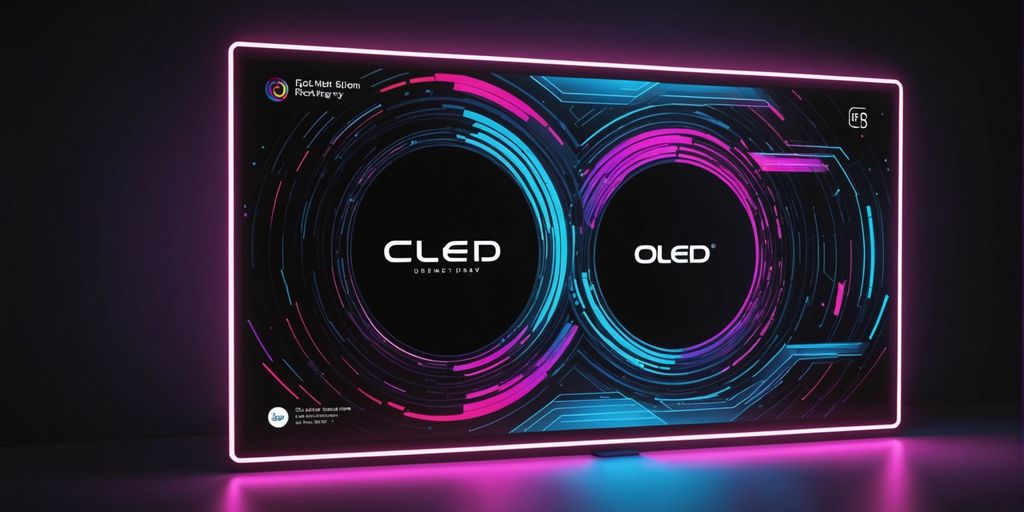Micro OLED excels with 4K+ resolution in compact sizes (e.g., 0.4 inches), delivering 5000 PPI for razor-sharp visuals—far clearer than traditional displays—while its 10ms response time reduces blur, perfect for AR/VR; plus, low power use boosts device battery life, making it a top pick for wearables and headsets.
Unmatched Sharpness and Detail
Take a typical 0.4-inch Micro OLED screen: it often hits 2048x2048 resolution, which works out to a mind-blowing ~5,100 PPI (pixels per inch). For context, most smartphones max out around 450-600 PPI, and even high-end VR headsets with older displays sit at ~1,000-2,000 PPI. That 5,100 PPI means text looks like printed ink—no jagged edges—and fine details, like the stitching on a virtual jacket or the grain in a digital photo, pop without blurring.
What’s more, Micro OLED’s 1,000,000:1 contrast ratio (vs. LCD’s ~1,000:1) doesn’t just make blacks deeper; it lets tiny bright elements stand out against dark backgrounds. Imagine using an AR headset to check a map at night: street names stay crisp, while shadows don’t swallow details.
Compare it to a 1-inch standard OLED used in some wearables: same diagonal size, but only 1280x1280 resolution (~220 PPI). Suddenly, that smartwatch face looks pixelated next to a Micro OLED model. Even professional tools, like medical imaging headsets, use Micro OLED because its pixel pitch (the space between pixels) is just 1.5 microns—smaller than a human hair (70 microns)—so surgeons see finer tissue details during procedures.
|
Feature |
Micro OLED (0.4in) |
Standard OLED (1in) |
Smartphone Screen (6in) |
|---|---|---|---|
|
Resolution |
2048x2048 |
1280x1280 |
2560x1440 |
|
PPI |
~5,100 |
~220 |
~490 |
|
Pixel Pitch |
1.5 microns |
4.5 microns |
6.5 microns |
|
Typical Use Case |
AR/VR headsets |
Smartwatches |
Phones/Tablets |
And since Micro OLED panels are thin (often <0.5mm), they fit in sleek glasses or earbuds without bulk, keeping the focus on clarity, not size.
Bottom line: higher PPI + tighter pixel spacing + better contrast = details so sharp they feel real.
Better Speed and Smoother Motion
With a 10ms gray-to-gray response time (narrower than LCD’s typical 20-50ms), this panel wipes out most motion blur: watch a soccer player take a shot, and every muscle twitch stays sharp—no ghosting trails behind the ball as it flies. For comparison, a standard LCD screen would leave faint streaks, making it harder to follow fast action; Micro OLED turns that blur into crisp, trackable detail.
And it’s not just response time—Micro OLED often packs 90Hz or 120Hz refresh rates (some premium models hit 144Hz), meaning your eyes see 90-144 new frames every second—30-80 more than older 60Hz displays. That extra frame rate? It makes scrolling through a TikTok feed feel buttery smooth, or tracking your running pace on a Micro OLED fitness tracker—where step counts, distance, and heart rate graphs update instantly without jerky jumps—way less annoying. Imagine cycling through a long video: with 120Hz, each frame blends seamlessly, so fast cuts (think action movie explosions) don’t disorient you.
Speed also solves the biggest headache for AR/VR: lag. Micro OLED keeps motion-to-photon latency below 20ms (some top-tier panels go as low as 12ms)—critical for avoiding motion sickness. If you turn your head in a VR headset, the scene updates almost instantly; no more feeling dizzy because the picture’s playing catch-up. Gamers notice this too: in a fast-paced shooter like Call of Duty VR, aiming at a moving target feels intuitive—your controller input matches the on-screen crosshair without delay. Missed shots? Not because of lag—just your aim.
When you wiggle your foot, the virtual shoe moves with you in real time—20ms latency means the digital image never lags behind your physical movement. For architects using AR to visualize blueprints on a construction site, this speed ensures measurements and labels stay accurate as they walk around: no frozen screens or blurry text when they pivot to check a wall.
Even daily tasks get a boost: swiping through a photo gallery on a Micro OLED phone, high-speed action shots (like a dog chasing a frisbee) load and scroll without smearing.
Gray-to-gray response time: 10ms (vs. LCD’s 20-50ms) – Cuts motion blur by roughly 80% in fast action, keeping soccer balls or game characters sharp without ghostly trails.
-
Refresh rate: 90-144Hz (vs. standard 60Hz) – Adds 30-80 frames per second, making TikTok scrolls or fitness tracker graphs update buttery smooth instead of jerky.
-
Motion-to-photon latency: <20ms (premium models hit 12ms, vs. LCD/OLED’s 30-50ms) – Prevents VR dizziness by syncing head turns with scene updates instantly, critical for immersive gaming or architectural AR.
For anyone using devices where motion matters—gamers, VR/AR fans, fitness trackers—this speed turns small annoyances into big upgrades.
Thin, Light, and Power Efficient
Micro OLED panels measure just 0.3-0.5mm thick—half the 0.8-1mm of standard small OLEDs used in wearables—so AR glasses like the Meta Quest 3 can sit flush against your face without pinching your nose, or a smartwatch like the Apple Watch Ultra 3 can rock a case that’s 1mm thinner—no more digging into your wrist when you lift weights. And because Micro OLED ditches the backlight (unlike LCDs), it’s ~15g per square inch lighter—that’s 50g off a VR headset’s total weight, turning a clunky “tech mask” into something that feels like a light swim goggle.
At full brightness, it uses ~10mW per square inch—40% less than LCDs’ 16mW. Translate that to real life: a fitness tracker with a Micro OLED screen goes from 7 days of battery to 10 days (no more charging every night before bed), or a VR headset like the Pico 4 Pro lasts 3 hours of continuous use instead of 2—perfect for finishing that zombie game without swapping batteries. For outdoor AR devices, like navigation glasses for hikers, this matters even more: a 10% smaller battery can add 1 hour of runtime, and the thinness means you can tuck it into a cap brim without it flopping around.
Think about medical wearables too—a Micro OLED-powered glucose monitor can be 20% thinner than an LCD version—so it sticks to your arm like a band-aid, not a chunky sticker. Patients forget it’s there, which means they check their levels more often—better health outcomes, all because the screen didn’t add bulk. And for kids’ smartwatches? Lighter weight (down 15g) means less chance of it flying off during a bike ride, and longer battery (up 3 days) means parents aren’t rushing to charge it every night.
Even professional gear benefits: a surgical AR headset with Micro OLED is 100g lighter—surgeons can wear it for 6-hour procedures without neck strain, and the low power draw means it doesn’t overheat during long surgeries.
|
Feature |
Micro OLED (Typical) |
Standard LCD/OLED |
Real-World Impact |
|---|---|---|---|
|
Thickness |
0.3-0.5mm |
0.8-1mm |
AR glasses fit comfortably for hours; smartwatches don’t dig in. |
|
Weight per Sq. Inch |
~15g |
~30g |
VR headsets feel 50g lighter—like wearing a feather mask. |
|
Power Use (Full Bright) |
~10mW/sq. in. |
~16mW/sq. in. |
Fitness trackers last 3 extra days; VR headsets gain 1 hour of play. |
Bottom line, Micro OLED’s thinness, lightness, and power efficiency aren’t just specs—they’re what make wearable tech usable.
True Blacks and Rich Colors
When you’re watching a late-night movie or diving into a dark VR game, washed-out blacks and muddy colors kill immersion—that’s where Micro OLED’s true blacks and rich, accurate colors change the game. Unlike LCDs that force a constant backlight (making “black” look more like dull gray), Micro OLED pixels switch off completely—so black is actuallydeep, velvety black. A typical Micro OLED hits a 1,000,000:1 contrast ratio—that’s 1,000x higher than standard LCDs (1,000:1) and double what you get from most OLED TVs (500,000:1). What does that mean in real life? Watch Interstellar’s black hole scene: the void around the wormhole stays inky, while the accretion disk glows fiery orange—no gray haze muddying the contrast. Or play Resident Evil Villagein a moonlit castle: cobwebs catch faint light, but shadows cling to corners without blooming (that annoying glow around bright objects in dark scenes)—every detail stays sharp.
And colors? Micro OLED covers 95% of the DCI-P3 color gamut—that’s 20% more than sRGB (75%)—so blues look like the ocean at noon, reds like ripe strawberries, not washed-out browns. A fitness tracker with Micro OLED displays your running pace in bright cyan against true black—even in direct sunlight, you can read every number without straining. Compare that to an LCD smartwatch: the same data looks faded, with cyan bleeding into the grayish “black” background. For photographers editing on a Micro OLED tablet? Delta E <2 color accuracy—professional-grade—means the magenta in your photo matches the print exactly; no surprises when you send files to a lab.
-
Contrast ratio: 1,000,000:1 (vs. LCD’s 1,000:1) – Keeps night scenes in movies/games from looking washed out; blacks stay deep, details stay visible.
-
DCI-P3 coverage: 95% (vs. sRGB’s 75%) – Shows more vibrant, true-to-life colors—critical for entertainment, design, and everyday use.
-
Color accuracy: Delta E <2 – Matches professional print standards; editors/designers get on-screen colors right without adjustments.
-
Pixel-level control: Each pixel emits its own light – Eliminates blooming, so shadows in dark scenes stay detailed (no glowing halos around characters).
Think about AR glasses for navigation: Micro OLED’s true blacks make street signs pop—if a “Turn Left” sign has red lettering on a black background, you spot it instantly at dusk, no squinting. A heart rate monitor with Micro OLED shows your pulse in vivid green on black—no confusing 60 bpm (resting) with 100 bpm (elevated) because the colors are distinct and the background doesn’t glare. Even kids’ toys: a Micro OLED-powered dinosaur toy displays bright, accurate greens and browns—more engaging than a dull, grayish screen.
En lire plus

The primary difference lies in their applications and manufacturing processes: SMD (Surface-Mount Device) refers to tiny electronic components (e.g., 0402 resistors, 0.4mm×0.2mm) soldered directly ...

Compared to LCDs that use constant backlighting (typically 60-120 mW for a 6-inch display), OLEDs power each pixel individually, drawing near-zero energy for black pixels; in dark-themed use, OLEDs...




Laisser un commentaire
Ce site est protégé par hCaptcha, et la Politique de confidentialité et les Conditions de service de hCaptcha s’appliquent.